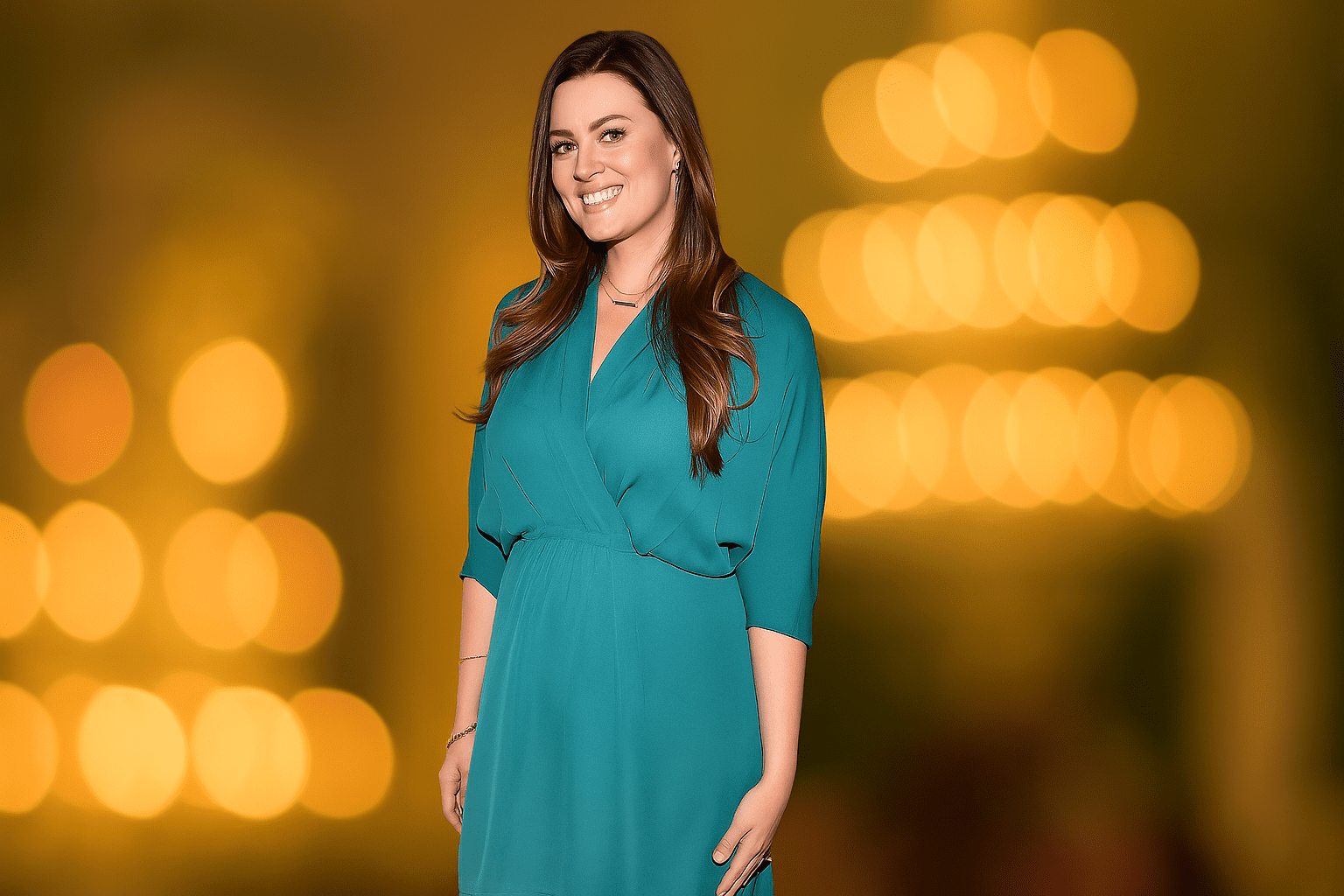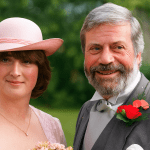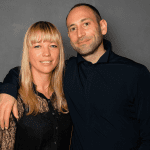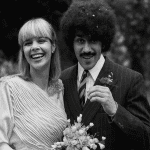In the grand tapestry of Hollywood history, few names shine as brightly as Elizabeth Taylor and Richard Burton. Their love affair was legendary, their films iconic, and their marriage one of the most scrutinized unions of the 20th century. Yet within their glamorous and tumultuous lives, a quieter story existed—that of their adopted daughter, Maria Burton Carson.
Unlike her famous parents, Maria never sought the limelight. She chose instead a life of discretion, centered on family, faith, and quiet purpose. Hers is not a tale of red carpets and fame, but of resilience, dignity, and the challenges of growing up in one of the world’s most famous families.
This is the detailed, factual, and people-first biography of Maria Burton Carson—a woman who embodies strength, privacy, and grace.
Early Life and Adoption
Maria Burton was born in Germany in 1961, during a time of great cultural and political transition. Her early years were marked by health challenges that would shape her childhood. She was born with a severe orthopedic condition affecting her hips, requiring numerous surgeries and extensive rehabilitation.
At the time, Elizabeth Taylor, already one of Hollywood’s most recognized figures, was married to singer Eddie Fisher. Taylor had a strong maternal instinct—by then she was already a mother of three. In the early 1960s, during a visit to Germany, she learned about a baby in need of adoption and medical care. Deeply moved, Taylor began the adoption process.
When Taylor’s marriage to Fisher ended and her romance with Richard Burton began, the adoption continued. After Taylor married Burton in 1964, Richard Burton legally adopted Maria as well. Together, they gave her a loving home and the family name that would make her part of Hollywood’s royal lineage.
Maria’s adoption reflected both Taylor’s compassion and her sense of duty. Despite being surrounded by fame, Taylor prioritized her children’s welfare above all else, and Maria’s medical needs brought the family even closer.
A Childhood Between Two Worlds
Growing up as Maria Burton, the youngest member of the Taylor-Burton household, meant balancing two very different realities. On one hand, her parents were global icons—starring in blockbuster films, appearing in magazines, and traveling constantly between sets and premieres. On the other hand, Taylor was an intensely protective mother who tried to provide her children with stability and normalcy.
Maria’s childhood was unlike any other. She split her time between lavish homes in Los Angeles, Switzerland, and England. Yet, by many accounts, Elizabeth Taylor worked hard to create a sense of home that was warm, loving, and grounded.
Richard Burton, often away filming or performing on stage, was reportedly a doting father. He took pride in Maria’s progress as she underwent surgeries and therapy to overcome her health challenges. The Burtons’ shared compassion for their daughter’s recovery deepened their emotional bond, even amid their famously fiery relationship.
Despite the luxury surrounding her, Maria’s life was shaped less by celebrity and more by perseverance. Her early operations demanded months of care, physical therapy, and emotional resilience—a journey that Taylor personally oversaw. This period also revealed one of Taylor’s most admirable qualities: her fierce dedication as a mother.
Education and Early Interests
Elizabeth Taylor believed in education as a stabilizing force for her children. Maria attended private schools in Europe and the United States, focusing on academics and creative subjects. While there are few public details about her schooling, what is known is that Maria showed interest in fashion and design from a young age.
Growing up in a home surrounded by art, couture, and world-class designers left a lasting influence. Taylor’s impeccable sense of style—her iconic jewelry, dresses, and glamour—undoubtedly inspired Maria’s creative instincts. She later explored roles in the design world and talent representation, though she remained behind the scenes, avoiding fame for fame’s sake.
Adulthood: A Life Chosen Out of the Spotlight
While many celebrity children pursue acting, modeling, or public careers, Maria took a different route. She chose privacy. In a world where her family name could have opened endless doors, she preferred a quiet, family-centered life.
Maria has rarely given interviews or appeared in media, which is a conscious choice rather than coincidence. Unlike her half-siblings—Michael and Christopher Wilding, Liza Todd, and her adoptive father’s daughters from other marriages—Maria almost entirely avoided Hollywood.
Her life, by all accounts, has been defined by resilience, discretion, and independence. Friends close to the family have often described her as “kind, private, and loyal,” with a character shaped by both privilege and adversity.
Personal Life: Marriages and Motherhood
Maria’s adulthood has been marked by two significant relationships, both outside the glare of publicity.
First Marriage: Steve Carson
In the early 1980s, Maria married Steve Carson, a man who shared her appreciation for privacy. The couple settled in the United States and welcomed a daughter, Elizabeth “Eliza” Carson, in 1982. Naming her daughter after her iconic grandmother symbolized both affection and continuity—a tribute to the matriarch who had given Maria her start in life.
Although their marriage later ended, Maria and Steve Carson remained devoted co-parents. Maria prioritized Eliza’s upbringing, shielding her from the attention that naturally came with being Elizabeth Taylor’s granddaughter.
Second Marriage: Tom McKeown
In the late 1990s, Maria married Tom McKeown, and in 2001, they welcomed a son, Richard McKeown. This name, too, held emotional weight—honoring Richard Burton, the adoptive father who had loved her as his own.
Maria’s two children—Eliza and Richard—represent the blending of her two family legacies: one grounded in Hollywood’s golden age, the other in quiet resilience and privacy. She raised them both away from Los Angeles celebrity culture, giving them as normal a life as possible.
Her Children: Continuing Elizabeth Taylor’s Legacy
While Maria herself has remained private, her daughter Eliza Carson has occasionally appeared in public to represent the family’s philanthropic side.
Eliza serves as an ambassador for the Elizabeth Taylor AIDS Foundation (ETAF), continuing her grandmother’s work in HIV/AIDS awareness and prevention. This organization, founded in 1991, has become one of the most respected charities in its field, helping fund hundreds of programs worldwide.
In interviews, Eliza has shared personal stories about her grandmother’s compassion, sense of humor, and love of family. She once described Taylor as “more than a star—she was the heart of our family.” Eliza also spoke about wearing one of Taylor’s favorite perfumes, Gardenia, on her wedding day, symbolizing her bond with her grandmother and the enduring strength of the Taylor women.
Through Eliza’s involvement, Maria’s legacy quietly connects to her mother’s humanitarian spirit—a testament to the values that Elizabeth Taylor instilled in all her children.
The Taylor–Burton Legacy: Love, Turbulence, and Influence
To understand Maria’s life, one must also understand the magnitude of her parents’ story.
Elizabeth Taylor and Richard Burton’s romance was among the most publicized in modern history. They met on the set of Cleopatra (1963), and their chemistry became the stuff of legend. Their relationship was passionate, controversial, and tumultuous, marked by two marriages, two divorces, and an enduring emotional bond that lasted until Burton’s death in 1984.
Maria grew up in the midst of this storm of attention. Paparazzi followed the family everywhere, and headlines about her parents’ love life dominated newspapers across continents. Yet, despite the media circus, Elizabeth Taylor worked tirelessly to maintain boundaries around her children.
Taylor’s home life was full of warmth. She hosted family dinners, celebrated holidays with her children, and ensured that even amid glamour, her home remained a safe haven. Richard Burton, known for his intellect and booming voice, was equally tender with his adopted daughter. His letters and diaries often reference his affection for his “beautiful little Maria,” whom he regarded as his own.
The stability of her parents’ love for her—despite their own instability as a couple—helped Maria build a life anchored in emotional resilience.
Navigating Loss: The Passing of Her Parents
The loss of both Elizabeth Taylor (2011) and Richard Burton (1984) profoundly shaped Maria’s later years.
Richard Burton’s death in 1984 marked a turning point. Though she was only in her early twenties, Maria felt the absence of the father who had given her unconditional love and protection. Burton’s passing also rekindled public fascination with the Taylor–Burton love story, once again placing their family under scrutiny.
Elizabeth Taylor’s passing in 2011 brought global tributes, but for Maria and her siblings, it was deeply personal. Taylor’s funeral, held at Forest Lawn Memorial Park in Glendale, was a private affair attended by her children, grandchildren, and close friends. Maria and her family maintained a respectful silence, reflecting the quiet dignity with which they had always handled public attention.
Following Taylor’s death, her children became the custodians of her immense legacy—both artistic and humanitarian. Maria, though not public-facing, continued to be involved in preserving her mother’s charitable work through family initiatives and private support of the Elizabeth Taylor AIDS Foundation.
Maintaining Privacy in a Public Family
In an age of social media and constant exposure, Maria Burton Carson’s commitment to privacy is remarkable. She has no known public social profiles, rarely appears at celebrity events, and avoids interviews entirely.
Her choice to live quietly reflects both her personality and her upbringing. Elizabeth Taylor’s children were taught that fame was not a goal but a byproduct of passion and work. Maria internalized that lesson deeply. Her happiness has never depended on visibility—it stems from family, stability, and purpose.
This level of privacy has, inevitably, fueled curiosity. Some media outlets have confused her identity with Maria Burton, the filmmaker and producer. However, the two are separate individuals. Maria Burton Carson has no public record of involvement in film production or directing.
Personality and Character
Those who have encountered Maria in private settings describe her as gentle, thoughtful, and intelligent. She reportedly inherited her mother’s warmth and compassion, as well as her father’s wit and introspection.
Family insiders have said that Maria’s kindness and humility reflect the “real” Elizabeth Taylor—the nurturing, down-to-earth mother who loved fiercely and laughed often. Despite her parents’ fame, Maria never displayed any desire for celebrity or public approval.
Her life, though quiet, has been full of meaning. She has faced physical adversity, navigated the complexities of a world-famous family, and raised children who continue to embody the best of the Taylor–Burton legacy.
The Next Generation: Grandchildren and Family Ties
Elizabeth Taylor had ten grandchildren, and Maria’s two children—Eliza Carson and Richard McKeown—are part of that lineage. The extended Taylor family remains close-knit. They gather for family celebrations and anniversaries, honoring Elizabeth Taylor’s memory and her charitable mission.
Eliza’s continued work with ETAF represents the new generation’s commitment to using their platform for good. While not all of Taylor’s grandchildren are public figures, the common thread among them is philanthropy—a reflection of the values passed down from Taylor to her children, and from Maria to hers.
The Role of Faith and Values
Throughout her life, Elizabeth Taylor’s spirituality evolved—from Judaism to personal mysticism and deep compassion for humanity. Maria inherited her mother’s appreciation for faith and moral integrity.
She has been associated with quiet acts of charity and volunteerism, though she avoids publicity for such efforts. To her, philanthropy is not about headlines; it’s about compassion in action. This mirrors the ethos her mother instilled—help quietly, love deeply, and live authentically.
Legacy and Meaning
Maria Burton Carson’s life defies the expectations often placed upon celebrity children. She represents a different kind of legacy—one that values privacy, family, and authenticity over fame.
In a culture obsessed with exposure, her choice to remain private speaks volumes. It suggests that one can come from extraordinary circumstances yet lead an ordinary, fulfilling life. Maria’s story is not about red carpets or fame; it’s about love, endurance, and grace in the face of constant scrutiny.
Through her children and her quiet involvement in family causes, Maria ensures that Elizabeth Taylor’s legacy continues—not as a monument to stardom, but as a living testament to compassion and family unity.
Conclusion
Maria Burton Carson may not appear on magazine covers or in television interviews, but her life is no less remarkable. Born in Germany and adopted into one of Hollywood’s most iconic families, she grew up surrounded by fame yet chose humility.
Her story is one of compassion, endurance, and quiet dignity. She overcame medical challenges, navigated the complexities of global celebrity, raised two children, and helped sustain her mother’s humanitarian legacy—all without seeking recognition.
In a world where celebrity is often mistaken for success, Maria reminds us that the truest measure of a person lies not in their fame, but in their humanity.
Her life—rooted in love, privacy, and integrity—stands as one of the most beautiful, understated chapters in the Taylor–Burton legacy.










